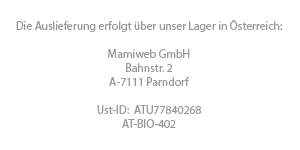Activating the pineal gland with Haritaki
- 7th century Buddhists -
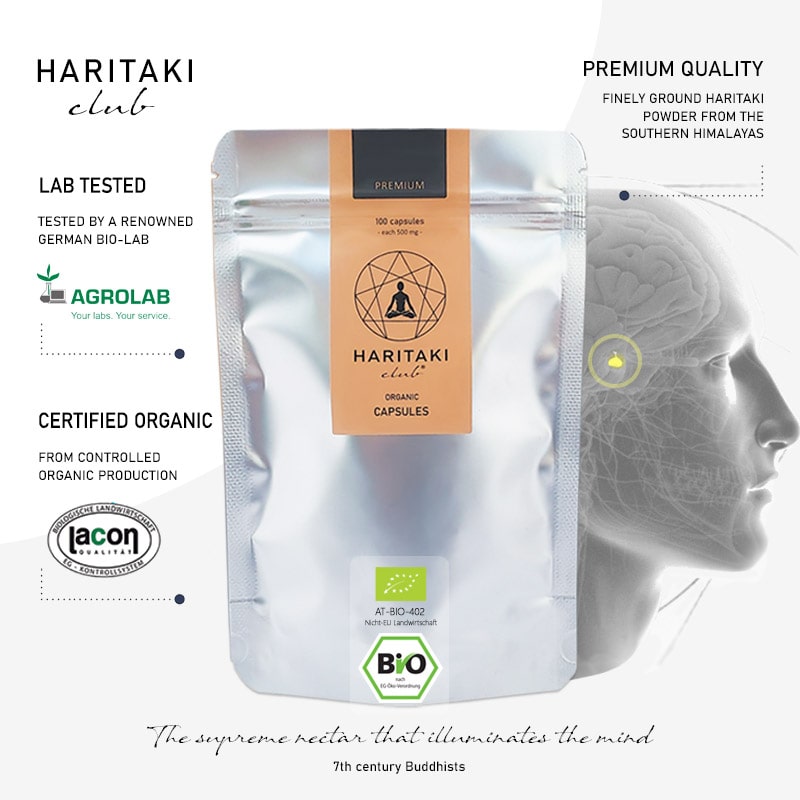
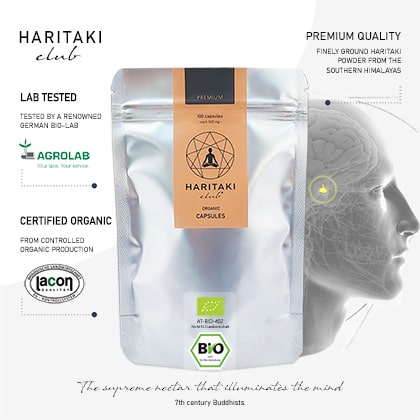
Ayurveda: Haritaki strengthens and unifies all three doshas
According to Ayurvedic teachings, Haritaki powerfully unites all three dosha energies, creating a synergistic relationship between all five elements of life.
According to this, the consumption of Haritaki can support homeostasis on several levels, leading to an advanced inner state conducive to the awakening of the Third Eye.
Read more here
In Ayurvedic medicine, the biological energies that determine the health of our mental and physical functions are called doshas (vata, pitta and kapha).
Balancing the dosha energies, and the elements within them, provides access to the specific requirements of each person's health and well-being.
Doshas in Ayurveda
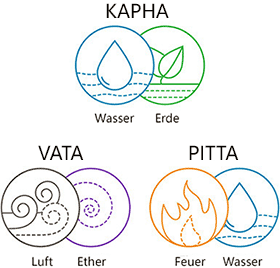
Ayurveda: "The queen of all medicinal plants".
In Ayurveda, Haritaki is characterized as detoxifying and blood purifying (detox), it strengthens all four doshas (or humors), and is described as the "queen of all medicinal plants" or a "life-giving" fruit because of its manifold effects.
The traditional Tibetan medicine
Haritaki is so useful and important that it has been used in almost all Tibetan medicines since ancient times.
This is especially telling because haritaki does not occur naturally in Tibet and must be imported from India or Nepal, across the Himalayas.
Haritaki is called the "Great Golden Fruit" in Buddhism.
Buddha and Haritaki
One of the most important Buddhist principles is: "Don't believe anything because a wise man has said it. Believe nothing because everyone believes it. Believe nothing because it is written. Believe nothing because it is considered sacred. Believe nothing because someone else believes it. Believe only what you yourself have recognized to be true."
In Buddhism, there are few external prescriptions. The goal of Buddhism is the development of one's own mind in order to ultimately attain "Buddha nature.
By this is meant that in every human being the capacity for enlightenment already exists. This is indestructible and unborn, because it cannot be influenced by external influences, nor by psychological changes. It is a concept of transcendence.
The way to it leads through self-reliance and personal responsibility of man, as well as meditation.
Meditation plays a crucial role in Buddhism. In addition to the liberation of thoughts, it serves above all to recognize something as "true".
Using the example of the unborn child that matures in the mother's body according to the exact blueprint of DNA, we can see that the body can read the information contained in the DNA down to the smallest detail.
This elementary insight is important to understand where the inner realization (in deep meditation) comes from.
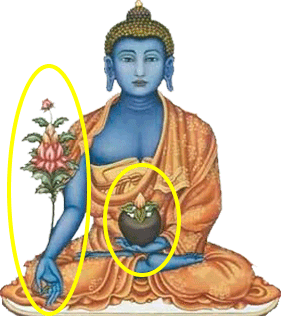 Buddha holds Haritaki fruit and branch in hands
Buddha holds Haritaki fruit and branch in hands
Buddha himself valued the power of Haritaki extraordinarily, he took it daily, so the monks tell. Haritaki embodies the central value of Buddhism, compassion. This is symbolized in countless Medicine Buddha statues by depicting Buddha with a Haritaki fruit and a Haritaki branch in his hands.
This not only places Haritaki on a high pedestal, but emphasizes its extraordinary importance for our health, long life, and spiritual development.
The pineal gland
The pineal gland is located between the two halves of the brain, deep in the middle of the skull, at about the level of the eyebrows.
It takes its name from a pine cone, because of its characteristic cone-like shape. The pineal gland is about 5 to 8 millimeters in size in adult humans.
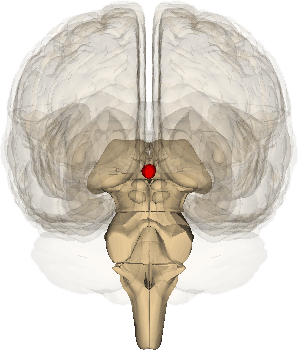 The pineal gland is considered the seat of the so-called "third eye".
The pineal gland is considered the seat of the so-called "third eye".
The exact function of the pineal gland is still controversial within science and largely unexplored in many areas, although one is aware of its importance.
Prof. Rick Strassman's research links DMT (dimethyltryptamine) to the pineal gland. It postulates that endogenous DMT is released in the pineal gland, which can lead to visions and hallucinogenic experiences.
DMT is considered one of the most potent hallucinogenic substances known. It is also found, for example, in ayahuasca (plant decoction) and is often referred to as "God's molecule" because its ingestion leads to extraordinary psychedelic experiences and cognitions.
Ayahuasca
Ayahuasca or hoasca tea is a hallucinogenic potion consisting of plants containing DMT, which was originally used by South American natives of the Amazon basin as part of spiritual rituals to expand consciousness and is still used today,
for example in the Santo Daime religion. Typically, ayahuasca is prepared and administered by experienced shamans.
A study showed that people were more mindful of themselves and their surroundings 24 hours after drinking ayahuasca than before taking it.
Recent open-label studies of patients with treatment-resistant depression also found that a single dose of ayahuasca triggered a rapid antidepressant effect that lasted for weeks after ingestion.
Source: Psychopharmacology
The religious use of ayahuasca is legally guaranteed in Brazil and was also legalized in the United States by a 2006 U.S. Supreme Court decision.
In a study published in the journal Nature, conducted with rats, it was shown that after the induction of experimental cardiac arrest in the animals, there was a significant increase in endogenous DMT levels in the visual cortex.
The study authors suggest that this phenomenon may also occur in the human brain.
Source: Nature: DMT in mammalian brains
The sudden increase in DMT concentration in extreme situations (in the study: "cardiac arrest") is often regarded as the reason for near-death experiences or hallucinogenic visions.
However, science is still in its infancy in understanding the pineal gland. This is surprising, since the pineal gland was considered extraordinarily important in almost all ancient cultures and was considered the gateway to the other dimension.
After all, the scientific community agrees that the pineal gland is responsible for our melatonin production.
Through this melatonin release, it controls the day-night rhythm of the body and thus has a great influence on many organ functions.
In addition to melatonin, the gland also secretes neuropeptides, but their effect is also still largely unexplored.
Melatonin
The neurotransmitter melatonin has a wide-ranging effect on the function of many organs, whose activity is controlled accordingly. If melatonin production is disturbed, this can have fatal consequences.
For example, kidney function, heart rate, blood pressure, body temperature and many other organ activities are controlled via the neurotransmitter. In women, melatonin stimulates the release of FSH (follicle-stimulating hormone) and LH (luteinizing hormone).
Melatonin can also protect against neurodegeneration, which is the progressive loss of function of nerve cells. Neurodegeneration occurs in diseases such as Alzheimer's and Parkinson's disease.
Calcification of the pineal gland
From a medical point of view, it is known that calcification of the pineal gland impairs its function. It is undisputed that a dysfunctional pineal gland results in serious negative consequences.
Typical symptoms of a dysfunctional pineal gland include insomnia, mood swings, anxiety, depression and a weakened immune system.
Exactly what causes the pineal gland to calcify has hardly been scientifically researched, but it is suspected that it is primarily our modern lifestyle that contributes to its premature calcification.
These include chemical substances (environmental toxins), heavy metals, stress and increasing exposure to radiation.
Several studies in which the calcification rates of the pineal gland were examined on different continents support this thesis.
For example, it was shown that the calcification rate of the pineal gland varies greatly in different regions, with a striking correlation to the degree of industrialization of the respective region.
In adult Africans, the calcification rate of the pineal gland is only about five to 15 percent, in Asians it is 15 to 25 percent, and in Europeans it is between 60 and 80 percent.
Source: National Library of Medicine
Other studies show that the degree of pineal gland calcification is higher in people with Alzheimer's disease, and there is an association between pineal gland calcification and some migraine and cluster headaches.
Source: Cleveland Clinic
Study: Changes in the pineal gland after heavy metal treatment
In a study in which rats were treated with heavy metal salt mixtures for 90 days, there were significant negative changes in their pineal glands, as well as compensatory adaptive processes with signs of functional stress.
The morphologic changes were of nonspecific polymorphic nature, such as severe disturbances of organ hemodynamics, impairment of vascular wall morphology, development of tissue hypoxia and oxidative stress, accelerated processes of
apoptosis in part of the pinealocytes, a significant decrease in the level of glutathione peroxidase in the organ, and reactive astrogliosis in response to the action of the damaging agent.
Pineal gland not protected by blood-brain barrier
Unlike the brain, the pineal gland is not protected from toxins in the blood by the blood-brain barrier.
After the kidneys, the pineal gland is the most perfused organ of the body, which allows toxins transported in the blood to accumulate in the pineal gland to a particular extent.
This multitude of toxins can contribute to a calcification of the pineal gland, making it increasingly dysfunctional. This is reflected, among other things, in disturbed melatonin secretion.
Typical symptoms of this are sleep problems, mood swings, depression and a weakened immune system.
One of the main causes of their premature calcification is thought to be the accumulation of heavy metal residues. Mercury is said to be a particular culprit in this regard.
The results of scientific studies show that Haritaki can support the decalcification of the pineal gland by assisting the liver in its ongoing efforts to remove mercury from the body.
Findings of modern science
In animal studies, an aqueous extract of Haritaki (Terminalia Chebula) was found to lower MDA levels. It increased the activity of GSH, SOD and GPx, which inhibited the accumulation of mercury and provided an uncomplicated pathway for the nephron.
As a result, Haritaki is described as a promising candidate against mercury-induced toxicity.
Soruces:
A number of studies attribute neuroprotective effects to Haritaki, and recommend it in the treatment of Alzheimer's disease and amnesia.
Sources:
Other scientific studies attest Haritaki a positive effect on thinking ability and neurodegenerative diseases.
Sources:
We provide you with organic Haritaki, in premium quality, from the southern Himalaya regions.


Doshas in Ayurveda

Ayurveda: "The queen of all medicinal plants".
In Ayurveda, Haritaki is characterized as detoxifying and blood purifying (detox), it strengthens all four doshas (or humors), and is described as the "queen of all medicinal plants" or a "life-giving" fruit because of its manifold effects.The traditional Tibetan medicine
Haritaki is so useful and important that it has been used in almost all Tibetan medicines since ancient times. This is especially telling because haritaki does not occur naturally in Tibet and must be imported from India or Nepal, across the Himalayas.Haritaki is called the "Great Golden Fruit" in Buddhism.
Buddha and Haritaki
One of the most important Buddhist principles is:Meditation plays a crucial role in Buddhism. In addition to the liberation of thoughts, it serves above all to recognize something as "true". Using the example of the unborn child that matures in the mother's body according to the exact blueprint of DNA, we can see that the body can read the information contained in the DNA down to the smallest detail. This elementary insight is important to understand where the inner realization (in deep meditation) comes from.

The pineal gland
The pineal gland is located between the two halves of the brain, deep in the middle of the skull, at about the level of the eyebrows. It takes its name from a pine cone, because of its characteristic cone-like shape. The pineal gland is about 5 to 8 millimeters in size in adult humans.
Prof. Rick Strassman's research links DMT (dimethyltryptamine) to the pineal gland. It postulates that endogenous DMT is released in the pineal gland, which can lead to visions and hallucinogenic experiences.
DMT is considered one of the most potent hallucinogenic substances known. It is also found, for example, in ayahuasca (plant decoction) and is often referred to as "God's molecule" because its ingestion leads to extraordinary psychedelic experiences and cognitions.Ayahuasca
Ayahuasca or hoasca tea is a hallucinogenic potion consisting of plants containing DMT, which was originally used by South American natives of the Amazon basin as part of spiritual rituals to expand consciousness and is still used today, for example in the Santo Daime religion. Typically, ayahuasca is prepared and administered by experienced shamans.A study showed that people were more mindful of themselves and their surroundings 24 hours after drinking ayahuasca than before taking it.
Recent open-label studies of patients with treatment-resistant depression also found that a single dose of ayahuasca triggered a rapid antidepressant effect that lasted for weeks after ingestion.
The religious use of ayahuasca is legally guaranteed in Brazil and was also legalized in the United States by a 2006 U.S. Supreme Court decision.
The sudden increase in DMT concentration in extreme situations (in the study: "cardiac arrest") is often regarded as the reason for near-death experiences or hallucinogenic visions.
However, science is still in its infancy in understanding the pineal gland. This is surprising, since the pineal gland was considered extraordinarily important in almost all ancient cultures and was considered the gateway to the other dimension. After all, the scientific community agrees that the pineal gland is responsible for our melatonin production.Through this melatonin release, it controls the day-night rhythm of the body and thus has a great influence on many organ functions.
In addition to melatonin, the gland also secretes neuropeptides, but their effect is also still largely unexplored.Melatonin
The neurotransmitter melatonin has a wide-ranging effect on the function of many organs, whose activity is controlled accordingly. If melatonin production is disturbed, this can have fatal consequences. For example, kidney function, heart rate, blood pressure, body temperature and many other organ activities are controlled via the neurotransmitter. In women, melatonin stimulates the release of FSH (follicle-stimulating hormone) and LH (luteinizing hormone).Melatonin can also protect against neurodegeneration, which is the progressive loss of function of nerve cells. Neurodegeneration occurs in diseases such as Alzheimer's and Parkinson's disease.
Calcification of the pineal gland
From a medical point of view, it is known that calcification of the pineal gland impairs its function. It is undisputed that a dysfunctional pineal gland results in serious negative consequences.Typical symptoms of a dysfunctional pineal gland include insomnia, mood swings, anxiety, depression and a weakened immune system.
Exactly what causes the pineal gland to calcify has hardly been scientifically researched, but it is suspected that it is primarily our modern lifestyle that contributes to its premature calcification. These include chemical substances (environmental toxins), heavy metals, stress and increasing exposure to radiation.Several studies in which the calcification rates of the pineal gland were examined on different continents support this thesis. For example, it was shown that the calcification rate of the pineal gland varies greatly in different regions, with a striking correlation to the degree of industrialization of the respective region. In adult Africans, the calcification rate of the pineal gland is only about five to 15 percent, in Asians it is 15 to 25 percent, and in Europeans it is between 60 and 80 percent.
Study: Changes in the pineal gland after heavy metal treatment
In a study in which rats were treated with heavy metal salt mixtures for 90 days, there were significant negative changes in their pineal glands, as well as compensatory adaptive processes with signs of functional stress.The morphologic changes were of nonspecific polymorphic nature, such as severe disturbances of organ hemodynamics, impairment of vascular wall morphology, development of tissue hypoxia and oxidative stress, accelerated processes of apoptosis in part of the pinealocytes, a significant decrease in the level of glutathione peroxidase in the organ, and reactive astrogliosis in response to the action of the damaging agent.
Pineal gland not protected by blood-brain barrier
Unlike the brain, the pineal gland is not protected from toxins in the blood by the blood-brain barrier. After the kidneys, the pineal gland is the most perfused organ of the body, which allows toxins transported in the blood to accumulate in the pineal gland to a particular extent.This multitude of toxins can contribute to a calcification of the pineal gland, making it increasingly dysfunctional. This is reflected, among other things, in disturbed melatonin secretion. Typical symptoms of this are sleep problems, mood swings, depression and a weakened immune system.
One of the main causes of their premature calcification is thought to be the accumulation of heavy metal residues. Mercury is said to be a particular culprit in this regard.
The results of scientific studies show that Haritaki can support the decalcification of the pineal gland by assisting the liver in its ongoing efforts to remove mercury from the body.Findings of modern science
In animal studies, an aqueous extract of Haritaki (Terminalia Chebula) was found to lower MDA levels. It increased the activity of GSH, SOD and GPx, which inhibited the accumulation of mercury and provided an uncomplicated pathway for the nephron. As a result, Haritaki is described as a promising candidate against mercury-induced toxicity.


Our Products
Our quality features
Our product is organic, vegan, laboratory tested, kosher, halal and certified according to IFS, EU Bio and ISO-standards.Laboratory tested by an independent body
Quality is our highest priority, therefore every batch is additionally microbiologically tested by an independent German laboratory.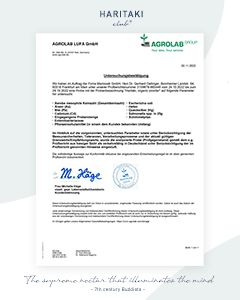
click to enlarge
Fully recyclable packaging
These provide the best protection against moisture, oxygen, and UV rays, making them the most suitable for Haritaki powder. By thermolaminating for airtight sealing, we avoid solvent-based adhesives, which are harmful to the environment.

Haritaki - the sacred fruit of Buddha
Haritaki is the name given to the fruit of the Haritaki tree, which is native to Southeast Asia and India and grows up to 30 meters high. Haritaki is revered as "holy" in many places, as already the Sanskrit name "Haritaki" makes clear, which means translated: "He who comes from the house of God". Tibetan monks have been importing Haritaki for centuries - sometimes laboriously - from the southern Himalayan regions, as they consider it essential for their health and spiritual vitality.Haritaki: "The queen of all medicinal plants"
It is therefore not surprising that Haritaki was already in ancient times, in the oldest medical books in the world such as the "Materia Medica of Ayurveda", "An illustrated Tiebto-Mongolia materia" and the "Principles of Lamaist Pharma
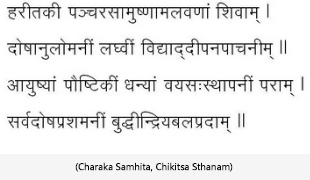
Die Kraft von Haritaki ist in "Chikitsa Sthana", dem speziellen Therapie
Buddha selbst, so erzählen uns die Mönche, hatte die tägliche Einnahme von Haritaki empfohlen.




